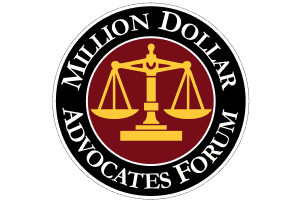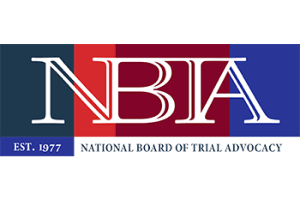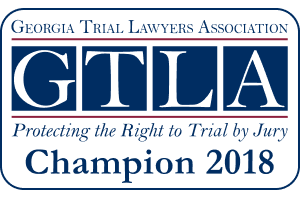Like Family.
49 CFR 390.5
Sec. 390.5 Definitions.
Unless specifically defined elsewhere, in this subchapter:
Accident means–
(1) Except as provided in paragraph (2) of this definition, an occurrence involving a commercial motor vehicle operating on a highway in interstate or intrastate commerce which results in:
(i) A fatality;
(ii) Bodily injury to a person who, as a result of the injury, immediately receives medical treatment away from the scene of the accident; or
(iii) One or more motor vehicles incurring disabling damage as a result of the accident, requiring the motor vehicle(s) to be transported away from the scene by a tow truck or other motor vehicle.
(2) The term accident does not include:
(i) An occurrence involving only boarding and alighting from a stationary motor vehicle; or
(ii) An occurrence involving only the loading or unloading of cargo.
Alcohol concentration (AC) means the concentration of alcohol in a person’s blood or breath. When expressed as a percentage it means grams f alcohol per 100 milliliters of blood or grams of alcohol per 210 liters of breath.
Bus means any motor vehicle designed, constructed, and or used for the transportation of passengers, including taxicabs.
Business district means the territory contiguous to and including a highway when within any 600 feet along such highway there are buildings in use for business or industrial purposes, including but not limited to hotels, banks, or office buildings which occupy at least 300 feet of frontage on one side or 300 feet collectively on both sides of the highway.
Charter transportation of passengers means transportation, using a bus, of a group of persons who pursuant to a common purpose, under a single contract, at a fixed charge for the motor vehicle, have acquired the exclusive use of the motor vehicle to travel together under an itinerary either specified in advance or modified after having left the place of origin.
Commercial motor vehicle means any self-propelled or towed motor vehicle used on a highway in interstate commerce to transport passengers or property when the vehicle–
(1) Has a gross vehicle weight rating or gross combination weight rating, or gross vehicle weight or gross combination weight, of 4,536 kg (10,001 pounds) or more, whichever is greater; or
(2) Is designed or used to transport more than 8 passengers
(including the driver) for compensation; or
(3) Is designed or used to transport more than 15 passengers,
including the driver, and is not used to transport passengers for compensation; or
(4) Is used in transporting material found by the Secretary of Transportation to be hazardous under 49 U.S.C. 5103 and transported in a quantity requiring placarding under regulations prescribed by the Secretary under 49 CFR, subtitle B, chapter I, subchapter C.
Conviction means an unvacated adjudication of guilt, or a determination that a person has violated or failed to comply with the law in a court of original jurisdiction or by an authorized administrative tribunal, an unvacated forfeiture of bail or collateral deposited to secure the person’s appearance in court, a plea of guilty or nolo contendere accepted by the court, the payment of a fine or court cost, or violation of a condition of release without bail, regardless of whether or not the penalty is rebated, suspended, or probated.
Direct assistance means transportation and other relief services provided by a motor carrier or its driver(s) incident to the immediate restoration of essential services (such as, electricity, medial care, sewer, water, telecommunications, and telecommunication transmissions) or essential supplies (such as, food and fuel). It does not include transportation related to long-term rehabilitation of damaged physical infrastructure or routine commercial deliveries after the initial threat to life and property has passed.
Disabling damage means damage which precludes departure of a motor vehicle from the scene of the accident in its usual manner in daylight after simple repairs.
(1) Inclusions. Damage to motor vehicles that could have been driven, but would have been further damaged if so driven.
(2) Exclusions.
(i) Damage which can be remedied temporarily at the scene of the accident without special tools or parts.
(ii) Tire disablement without other damage even if no spare tire is available.
(iii) Headlamp or taillight damage.
(iv) Damage to turn signals, horn, or windshield wipers which makes them inoperative.
Driveaway-towaway operation means any operation in which a motor vehicle constitutes the commodity being transported and one or more set of wheels of the motor vehicle being transported are on the surface of the roadway during transportation.
Driver means any person who operates any commercial motor vehicle.
Driving a commercial motor vehicle while under the influence of alcohol means committing any one or more of the following acts in CMV: Driving a CMV while the person’s alcohol concentration is 0.04 percent or more; driving under the influence of alcohol, as prescribed by State law; or refusal to undergo such testing as is required by any State or jurisdiction in the enforcement of Sec. 383.51(b)(2)(i)(A) or (B), or Sec. 392.5(a)(2).
Emergency means any hurricane, tornado, storm (e.g. thunderstorm, snowstorm, icestorm, blizzard, sandstorm, etc.), high water, wind-driven water, tidal wave, tsunami, earthquake, volcanic eruption, mud slide, drought, forest fire, explosion, blackout or other occurrence, natural or man-made, which interrupts the delivery of essential services (such as, electricity, medical care, sewer, water, telecommunications, and telecommunication transmissions) or essential supplies (such as, food and fuel) or otherwise immediately threatens human life or public welfare, provided such hurricane, tornado, or other event results in:
(1) A declaration of an emergency by the President of the United States, the Governor of a State, or their authorized representatives having authority to declare emergencies; by the FMCSA Field Administrator for the geographical area in which the occurrence happens; or by other Federal, State or local government officials having authority to declare emergencies, or
(2) A request by a police officer for tow trucks to move wrecked or disabled motor vehicles.
Emergency relief means an operation in which a motor carrier or driver of a commercial motor vehicle is providing direct assistance to supplement State and local efforts and capabilities to save lives or property or to protect public health and safety as a result of an emergency as defined in this section.
Employee means any individual, other than an employer, who is employed by an employer and who in the course of his or her employment directly affects commercial motor vehicle safety. Such term includes a driver of a commercial motor vehicle (including an independent contractor while in the course of operating a commercial motor vehicle), a mechanic, and a freight handler. Such term does not include an employee of the United States, any State, any political subdivision of a State, or any agency established under a compact between States and approved by the Congress of the United States who is acting within the course of such employment.
Employer means any person engaged in a business affecting interstate commerce who owns or leases a commercial motor vehicle in connection with that business, or assigns employees to operate it, but such terms does not include the United States, any State, any political subdivision of a State, or an agency established under a compact between States approved by the Congress of the United States.
Exempt intracity zone means the geographic area of a municipality or the commercial zone of that municipality described in appendix F to subchapter B of this chapter. The term “exempt intracity zone” does not include any municipality or commercial zone in the State of Hawaii. For purposes of Sec. 391.62, a driver may be considered to operate a commercial motor vehicle wholly within an exempt intracity zone notwithstanding any common control, management, or arrangement for a continuous carriage or shipment to or from a point without such zone.
Exempt motor carrier means a person engaged in transportation exempt from economic regulation by the Federal Motor Carrier Safety Administration (FMCSA) under 49 U.S.C. 13506. “Exempt motor carriers” are subject to the safety regulations set forth in this subchapter.
Farm vehicle driver means a person who drives only a commercial motor vehicle that is–
(a) Controlled and operated by a farmer as a private motor carrier of property;
(b) Being used to transport either–
(1) Agricultural products, or
(2) Farm machinery, farm supplies, or both, to or from a farm;
(c) Not being used in the operation of a for-hire motor carrier;
(d) Not carrying hazardous materials of a type or quantity that requires the commercial motor vehicle to be placarded in accordance with Sec. 177.823 of this subtitle; and
(e) Being used within 150 air-miles of the farmer’s farm.
Farmer means any person who operates a farm or is directly involved in the cultivation of land, crops, or livestock which–
(a) Are owned by that person; or
(b) Are under the direct control of that person.
Fatality means any injury which results in the death of a person at the time of the motor vehicle accident or within 30 days of the accident.
Federal Motor Carrier Safety Administrator means the chief executive of the Federal Motor Carrier Safety Administration, an agency within the Department of Transportation.
For-hire motor carrier means a person engaged in the transportation of goods or passengers for compensation.
Gross combination weight rating (GCWR) means the value specified by the manufacturer as the loaded weight of a combination (articulated) motor vehicle. In the absence of a value specified by the manufacturer,
GCWR will be determined by adding the GVWR of the power unit and the total weight of the towed unit and any load thereon.
Gross vehicle weight rating (GVWR) means the value specified by the manufacturer as the loaded weight of a single motor vehicle.
Hazardous material means a substance or material which has been determined by the Secretary of Transportation to be capable of posing an unreasonable risk to health, safety, and property when transported in commerce, and which has been so designated.
Hazardous substance means a material, and its mixtures or solutions, that is identified in the appendix to Sec. 172.101, List of Hazardous Substances and Reportable Quantities, of this title when offered for transportation in one package, or in one transport motor vehicle if not packaged, and when the quantity of the material therein equals or exceeds the reportable quantity (RQ). This definition does not apply to petroleum products that are lubricants or fuels, or to mixtures or solutions of hazardous substances if in a concentration less than that shown in the table in Sec. 171.8 of this title, based on the reportable quantity (RQ) specified for the materials listed in the appendix to Sec. 172.101.
Hazardous waste means any material that is ubject to the hazardous waste manifest requirements of the EPA specified in 40 CFR part 262 or would be subject to these requirements absent an interim authorization to a State under 40 CFR part 123, subpart F.
Highway means any road, street, or way, whether on public or private property, open to public travel. “Open to public travel” means that the road section is available, except during scheduled periods, extreme weather or emergency conditions, passable by four-wheel standard passenger cars, and open to the general public for use without restrictive gates, prohibitive signs, or regulation other than restrictions based on size, weight, or class of registration. Toll plazas of public toll roads are not considered restrictive gates.
Interstate commerce means trade, traffic, or transportation in the United States–
(1) Between a place in a State and a place outside of such State (including a place outside of the United States);
(2) Between two places in a State through another State or a place outside of the United States; or
(3) Between two places in a State as part of trade, traffic, or transportation originating or terminating outside the State or the United States.
Intrastate commerce means any trade, traffic, or transportation in any State which is not described in the term “interstate commerce.”
Medical examiner means a person who is licensed, certified, and/or registered, in accordance with applicable State laws and regulations, to perform physical examinations. The term includes but is not limited to, doctors of medicine, doctors of osteopathy, physician assistants, advanced practice nurses, and doctors of chiropractic.
Motor carrier means a for-hire motor carrier or a private motor carrier. The term includes a motor carrier’s agents, officers and representatives as well as employees responsible for hiring, supervising, training, assigning, or dispatching of drivers and employees concerned with the installation, inspection, and maintenance of motor vehicle equipment and/or accessories. For purposes of subchapter B, this definition includes the terms employer, and exempt motor carrier.
Motor vehicle means any vehicle, machine, tractor, trailer, or semitrailer propelled or drawn by mechanical power and used upon the highways in the transportation of passengers or property, or any combination thereof determined by the Federal Motor Carrier Safety Administration, but does not include any vehicle, locomotive, or car operated exclusively on a rail or rails, or a trolley bus operated by electric power derived from a fixed overhead wire, furnishing local passenger transportation similar to street-railway service.
Multiple-employer driver means a driver, who in any period of 7 consecutive days, is employed or used as a driver by more than one motor carrier.
Operator — See driver.
Other terms — Any other term used in this subchapter is used in its commonly accepted meaning, except where such other term has been defined elsewhere in this subchapter. In that event, the definition therein given shall apply.
Out-of-service order means a declaration by an authorized enforcement officer of a Federal, State, Canadian, Mexican, or local jurisdiction that a driver, a commercial motor vehicle, or a motor carrier operation, is out-of-service pursuant to Secs. 386.72, 392.5, 395.13, 396.9, or compatible laws, or the North American Uniform Out-of-Service Criteria.
Person means any individual, partnership, association, corporation, business trust, or any other organized group of individuals.
Principal place of business means the single location designated by the motor carrier, normally its headquarters, for purposes of identification under this subchapter. The motor carrier must make records required by parts 382, 387, 390, 391, 395, 396, and 397 of this subchapter available for inspection at this location within 48 hours (Saturdays, Sundays, and Federal holidays excluded) after a request has been made by a special agent or authorized representative of the Federal Motor Carrier Safety Administration.
Private motor carrier means a person who provides transportation of property or passengers, by commercial motor vehicle, and is not a for-hire motor carrier.
Private motor carrier of passengers (business) means a private motor carrier engaged in the interstate transportation of passengers which is provided in the furtherance of a commercial enterprise and is not available to the public at large.
Private motor carrier of passengers (nonbusiness) means private motor carrier involved in the interstate transportation of passengers that does not otherwise meet the definition of a private motor carrier of passengers (business).
Radar detector means any device or mechanism to detect the emission of radio microwaves, laser beams or any other future speed measurement technology employed by enforcement personnel to measure the speed of commercial motor vehicles upon public roads and highways for enforcement purposes. Excluded from this definition are radar detection devices that meet both of the following requirements:
(1) Transported outside the driver’s compartment of the commercial motor vehicle. For this purpose, the driver’s compartment of a passenger-carrying CMV shall include all space designed to accommodate both the driver and the passengers; and
(2) Completely inaccessible to, inoperable by, and imperceptible to the driver while operating the commercial motor vehicle.
Regional Director of Motor Carriers means the Field Administrator, Federal Motor Carrier Safety Administration, for a given geographical area of the United States.
Residential district means the territory adjacent to and including a highway which is not a business district and for a distance of 300 feet or more along the highway is primarily improved with residences.
School bus means a passenger motor vehicle which is designed or used to carry more than 10 passengers in addition to the driver, and which the Secretary determines is likely to be significantly used for the purpose of transporting preprimary, primary, or secondary school students to such schools from home or from such schools to home.
School bus operation means the use of a school bus to transport only school children and/or school personnel from home to school and from school to home.
Secretary means the Secretary of Transportation.
Single-employer driver means a driver who, in any period of 7 consecutive days, is employed or used as a driver solely by a single motor carrier. This term includes a driver who operates a commercial motor vehicle on an intermittent, casual, or occasional basis.
Special agent See appendix B to subchapter B — Special agents.
State means a State of the United States and the District of Columbia and includes a political subdivision of a State.
Trailer includes:
(a) Full trailer means any motor vehicle other than a pole trailer which is designed to be drawn by another motor vehicle and so constructed that no part of its weight, except for the towing device, rests upon the self-propelled towing motor vehicle. A semitrailer equipped with an auxiliary front axle (converter dolly) shall be considered a full trailer.
(b) Pole trailer means any motor vehicle which is designed to be drawn by another motor vehicle and attached to the towing motor vehicle by means of a “reach” or “pole,” or by being “boomed” or otherwise secured to the towing motor vehicle, for transporting long or irregularly shaped loads such as poles, pipes, or structural members, which generally are capable of sustaining themselves as beams between the supporting connections.
(c) Semitrailer means any motor vehicle, other than a pole trailer, which is designed to be drawn by another motor vehicle and is constructed so that some part of its weight rests upon the self-propelled towing motor vehicle.
Truck means any self-propelled commercial motor vehicle except a truck tractor, designed and/or used for the transportation of property.
Truck tractor means a self-propelled commercial motor vehicle designed and/or used primarily for drawing other vehicles.
United States means the 50 States and the District of Columbia.











